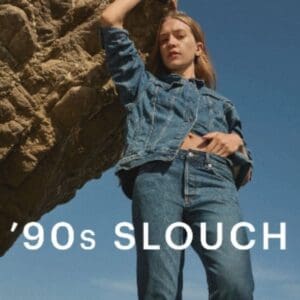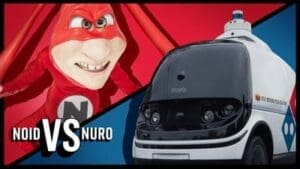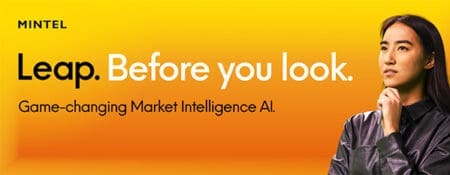-
Articles + –
How to maximize the impact of nostalgia marketing
Much of nostalgia marketing is currently centered around the experiences of Millennials in the 1990s, and marketers are missing an opportunity to connect older generations with their products and brands.
COVID-19 has normalized a yearning for the past and driven marketing around nostalgia
“Never mind if you weren’t there the first time around, the past is a place to occupy,” observes Mintel Trend, ‘Never Say Die’, which explores consumers’ receptivity to advertising and marketing that draws from the past.
Mintel identified this trend back in 2011, when consumers sought relief from anxiety due to the Great Recession. In the subsequent decade, the notion of nostalgia marketing has taken off, and food and drink brands have gravitated to the concept. During COVID-19, consumer anxiety has exacerbated this momentum even further as people seek ways to ease the uncertainty around the virus.
As nostalgia marketing continues to grow, savvy marketers should be careful to think beyond the obvious target – Millennials – to ensure they reach all generations and find ways to make nostalgia feel personal and relevant no matter who the audience is.
Nostalgia is an elastic concept, and the 1990s are currently on-trend

From fashion to hairstyles to food and drink, the 1990s are back in the spotlight in 2021. It makes sense: Millennials, who were children in the ’90s, have faced a rocky transition to adulthood. Their lives have included financial and emotional uncertainty from two recessions, 9/11 and now, COVID-19. As a result, consumers aged 25-44 are most likely to agree that they enjoy things that remind them of their past (eg childhood).
Marketers have recognized Millennials’ need for comfort, and advertising in the 2020s has centered around ’90s nostalgia. While there is great potential to draw on the ’90s to reach this generation, marketers must realize that nostalgia is not the same for all consumers, and by focusing solely on one generation, they risk missing out on the potential that nostalgia holds across generations.
Food and drink brands look to the 1990s during COVID-19
Marketers have drawn on ’90s trends to create a sense of familiarity and comfort during the pandemic.
’90s-era TV sitcom
Lipton Iced Tea launched a miniseries featuring Grammy winner T-Pain that was “playfully inspired by ’90s live-audience sitcom formats.”
https://www.youtube.com/watch?v=3FAQKmSVZJY
Classic mascot returns
Domino’s resurrected its Noid mascot in ads where the antihero tries to “thwart the advanced technology of Nuro’s R2 robot,” Domino’s driverless delivery truck.
Remixing a one-hit wonder
Vanilla Ice starred in an ad for meat company Bar-S. The ad featured the ’90s musician remixing another classic ’90s song, “Baby Got Back,” to talk about grilling during the pandemic.
The best nostalgia marketing will address multiple audiences
Marketers know that nostalgia marketing will resonate with the generation that first experienced the product or service being highlighted. However, those who do not bring their messages into the modern age risk leaving out the generations who did not grow up with their brand.
For example, US consumers aged 18-24 are least likely to show interest in things that remind them of their past. Yet Gen Zs are currently enthralled with the fashion and beauty of the 1990s. This suggests that there is an opportunity to draw on what feels nostalgic for one generation and make it feel entirely new to the next generation.
One opportunity that could resonate well with younger consumers involves technology. Digital-native Gen Zs live their lives online, and savvy brands are increasingly including digital extras like NFTs (collectible digital art) as a way to draw in tech-focused younger consumers.
Mountain Dew goes back to the ’80s in its nostalgia marketing
Mountain Dew‘s 2021 ad for its Game Fuel beverage plays on the aerobics craze of the 1980s. It also features a popular gaming streamer, bringing the past into the present.
Nostalgia is a moving target, but consumers relate to personal connections
Nostalgia can be tricky to define, since what’s nostalgic for one consumer may not reflect the childhood or upbringing of another. Most US consumers, however, appear open to understanding other people’s experiences. According to Mintel research on US ancestry and American identity, nearly three in five US consumers say it’s important to learn about different cultures and that brands need to recognize more holidays from a variety of cultures.
Brands can convey a sense of belonging, safety, comfort and all of the other positive feelings that nostalgia marketing creates, and ask consumers to relate to the feeling, more than the exact experience, to feel that personal connection.
What we think
While the ’90s and Millennials make a great target for nostalgia marketing, marketers should ensure they do not miss out on appealing to younger and older generations. Consider drawing on past decades and including “modern” touches like digital collectibles. No matter the intended audience, be sure that marketing that focuses around nostalgia clearly delivers a message of comfort, safety and warmth.

Melanie Zanoza Bartelme is an Associate Director of Global Food Analyst at Mintel, providing insights on global innovation and consumer trends across a number of food categories.
-
Key drivers of in-store shopping now, and in the futureDiscover the in-store experiential retailing market in the US...Explore this Research
-
Mintel LeapMintel Leap is a revolutionary new AI-powered platform that will transform your research process....Book a demo







































